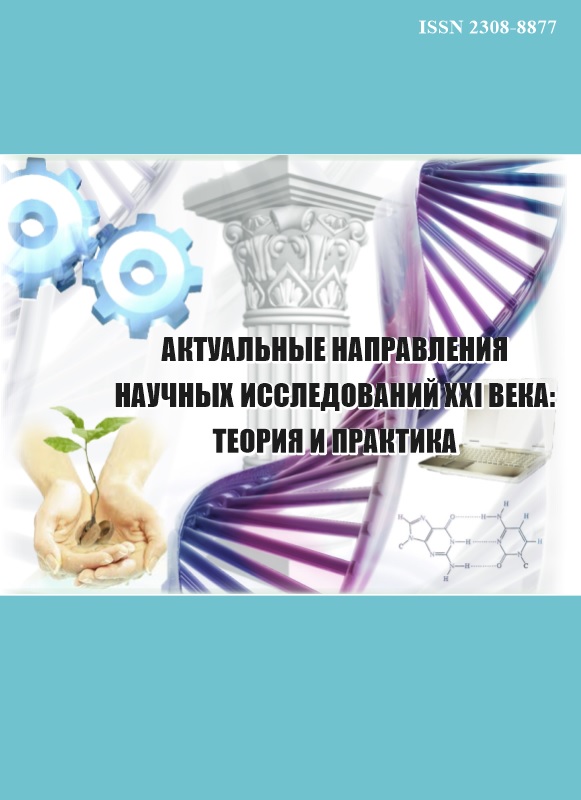Voronezh, Russian Federation
Russian Federation
The article deals with the issues of identifying promising areas of scientific and technical development of forestry in the Russian Federation from the point of view of the demand for innovations. Since the resources of the scientific and technical potential of forestry are limited, and the range of diverse tasks in the field of scientific and technological development is extremely wide, the system for the formation and implementation of such priorities is of paramount importance in the commercialization of forestry innovations in the Russian Federation, which will accelerate the process of diffusion of innovation. To substantiate the priorities of the diffusion of innovations in forestry in the Russian Federation, bibliometric analysis was applied. An analytical assessment of the priorities of the diffusion of innovations was carried out according to two criteria: the criterion of significance and the criterion of the dynamism of the analyzed direction of science and technology in the field of forestry, which is promising for the diffusion of innovations. It has been proved that, according to the criterion of significance, the most promising at the moment for the diffusion of innovations are scientific areas of forest fire protection, forest protection, invasions, chemical and biological means of forest protection, forest engineering, robotics and forest genetics and selection, biodiversity conservation. ... According to the criterion of dynamism, consumers are most interested in the direction for assessing the productivity, growth, depositing capacity of forest ecosystems. As the conclusions, well-founded proposals were made regarding the prospects for the diffusion of innovations in the forestry of the Russian Federation.
innovations, diffusion of innovations, priority directions of scientific and technological development, innovations in forestry, transfer of innovations, commercialization of innovations
Введение
Значительную долю процесса пространственного распространения знания составляет коммерческий обмен результатами интеллектуальной деятельности. Этот обмен является рыночным механизмом, обеспечивающим такой глобальный феномен, как диффузия инноваций (diffusion of innovations).
Условия для диффузии инноваций обеспечиваются системой инфраструктурных элементов инновационной деятельности, ориентированной на обеспечение процесса создания инноваций и последующее распространение их в экономике [1].
В лесном хозяйстве система инфраструктурных элементов инновационной деятельности представлена научно-исследовательскими, проектными и конструкторскими учреждениями системы соответствующих министерств, государственных комитетов и иных органов исполнительной власти РФ и ее субъектов. В основном в них проводятся исследования по прикладным направлениям науки, что не исключает и фундаментальные научные работы. Большой объем научных исследований в лесном хозяйстве выполняется на базе 49 образовательных организаций высшего образования (университетами, академиями, институтами).
В анализируемой выборке лесных вузов за последние пять лет наблюдается снижение численности научно-педагогических работников, что свидетельствует об устойчивом оттоке кадров из системы науки и высшего образования и что ставит под угрозу развитие лесной науки и лесного хозяйства (рис. 1).
В то же время развитие потенциала научных кадров в вузах протекает инертно, а численность научных сотрудников остается невысокой. В таких условиях вся нагрузка по проведению научно-исследовательских и опытно-конструкторских работ продолжает выполняться профессорско-преподавательским составом, что создает определенные трудности в достижении важных научных результатов. Научный потенциал научно-педагогических работников вузов лесного профиля остается стабильно высоким, более 70% имеют ученые степени.
1. Butakova M.M., Sokolova O.N Vliyanie innovacionnoy infrastruktury na processy sozdaniya i diffuzii innovaciy. Ekonomicheskoe razvitie regiona: upravlenie, innovacii, podgotovka kadrov. 2019; 6; 78-85. Rezhim dostupa: https://www.elibrary.ru/item.asp?id=41429667&
2. Chueh O., Ku-Ho L., , Wei-kuo T., Yi-Ru L. The Relationship between Resource Allocation, Knowledge Transfer and Innovation Performance. Academy of Management Proceedings. 2021; 15183. DOI: http://doi.org/10.5465/AMBPP.2021.15183abstract
3. Hayter C.S., Rasmussen E., Rooksby J.H. Beyond formal university technology transfer: innovative pathways for knowledge exchange. The Journal of Technology Transfer. 2020; 45(1); 1-8. DOI: http://doi.org/10.1007/s10961-018-9677-1
4. Istenic Starcic, Andreja & Subic Kovac, Maruska. (2020). Challenges of Contemporary Process of Knowledge Transfer and Innovation. University & industry knowledge transfer and innovation. WSEAS Press. 2020; 1-6. Rezhim dostupa: https://www.researchgate.net/publication/348000252_Challenges_of_Contemporary_Process_of_Knowledge_Transfer_and_Innovation
5. Larinina T.I., Zhukova Yu.S. Organizacionnoe obespechenie transfera innovaciy v sel'skom hozyaystve. Vektor ekonomiki. 2020; 9(51); 14. Rezhim dostupa: https://www.elibrary.ru/item.asp?id=44044870
6. Lemley M.A., Feldman R. Patent Licensing, Technology Transfer, & Innovation. American Economic Review. 2016; 106; 188-192. DOI: http://doi.org/10.1257/aer.p20161092
7. Marcelino-Jesus E. Zamiri M., Alves D., Sarraipa J.,Jardim-Goncalves R. Innovations Assessment Methodology to Promote Knowledge Transfer. In the 8th International Conference on Software Development and Technologies for Enhancing Accessibility and Fighting Info-exclusion (DSAI' 2018) at Thessaloniki, Greece in June 20-22. 2018; 248-255. DOI: http://doi.org/10.1145/3218585.3218668
8. Maximova T., Eid N. Analysis of innovation system and technology transfer. SHS Web of Conferences. 2021; 110. 01025. DOI: http://doi.org/10.1051/shsconf/202111001025
9. Morkovina S.S., Kunickaya O., Dolmatova L. [et al.] Comparative Analysis of Economic Aspects of Growing Seedlings with Closed and Open Root Systems: The Experience of Russia. Asian Journal of Water, Environment and Pollution. 2021; 18(2); 19-26. DOI: http://doi.org/10.3233/AJW210015
10. Shkarupa O., Boronos V., Vlasenko D., Fedchenko K. Multilevel transfer of innovations: Cognitive modeling to decision support in managing the economic growth. Problems and Perspectives in Management. 2021; 19(1); 151-162. DOI: http://doi.org/10.21511/ppm.19(1).2021.13
11. Seyung-Hee S., Keedong Y,. Factors Affecting Knowledge Transfer Effects in Innovation and Non-innovation Companies. Koreanische Zeitschrift fuer Wirtschaftswissenschaften. 2021; 39; 61-81. DOI: http://doi.org/10.18237/KDGW.2021.39.3.061
12. Tihomirova O.G. Diffuziya innovaciy, transfer tehnologiy i kommercializaciya innovaciy. Fundamental'nye issledovaniya. 2018; 1; 127-132. Rezhim dostupa: https://www.elibrary.ru/item.asp?id=32401744










